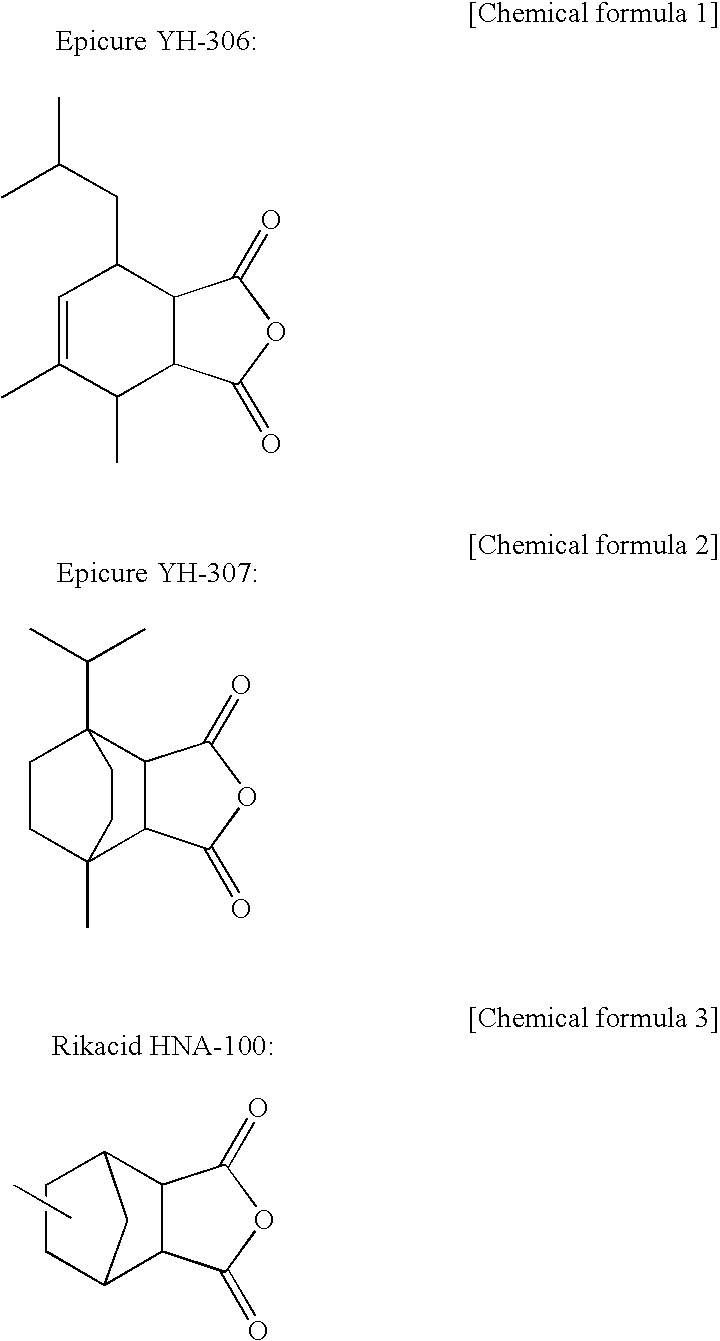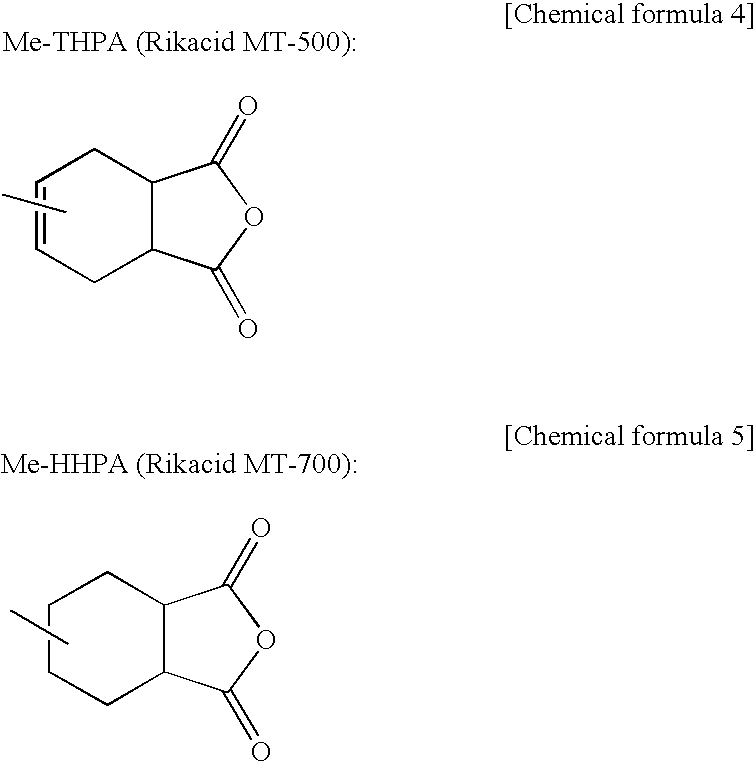Conductive adhesive
a conductive adhesive and paste-like technology, applied in the direction of non-macromolecular adhesive additives, capacitors, synthetic resin layered products, etc., can solve the problems of lowering the long-term reliability of in-vehicle electronic devices and modules, lowering the connection strength, and lowering the adhesive strength between the metal surface and the cured conductive product. , to achieve the effect of lowering the adhesive strength, and excelling in the adhesive strength
- Summary
- Abstract
- Description
- Claims
- Application Information
AI Technical Summary
Benefits of technology
Problems solved by technology
Method used
Image
Examples
examples 1 to 5
[0094] Spherical silver powder having an average particle diameter of 3 μm was employed as the metal powder for the conductive medium to be blended in the conductive paste; and the spherical silver powder was evenly dispersed by stirring in the one-component epoxy thermosetting resin component to prepare the conductive paste of the compounding composition listed in Table 1.
[0095] In said one-component epoxy thermosetting resin component,
[0096] used for the epoxy resin component thereof were
[0097] Epiclon HP-4032D (product of JER; 1,6-dihydroxynaphthalene diglycidyl ether, epoxy equivalent: 142) as the epoxy compound having naphthalene skeletons;
[0098] THATGE (1,2,10-trihydroxyanthracene triglycidyl ether, epoxy equivalent: 142) as the trifunctional epoxy compound having anthracene skeletons, Epikote 828EL, which is a bisphenol A-type epoxy resin (product of JER; epoxy equivalent: 187), or Epiclon HP-7200, which is a dicyclopentadiene-type epoxy resin (product of JER; epoxy equiv...
example 6
[0109] In comparison with the aforementioned conductive paste of Example 1, C11-Z-CN (product of Shikoku Chemicals Corporation; 1-cyanoethyl-2-undecyl imidazole; melting point: about 50° C.; molecular weight: 275) was employed as a cure accelerator in place of 2E4MZ-CN, and, with this exception, otherwise the same compounding conditions were chosen to prepare a conductive paste having the composition listed in Table 2.
[0110] In similar way as in Examples 1 to 5, in Example 6, in the one-component epoxy thermosetting resin component therefor, the content ratio of the epoxy compound having naphthalene skeletons to other epoxy compounds was 3:1, and on the other hand, the blending ratio of 0.9 molecule of the above-described dicarboxylic-acid derived cyclic acid anhydride to 2 epoxy groups was selected. In addition, 0.016 mole of the imidazole compound, which is a cure accelerator, was added to 1 mole of the epoxy group. Further, a silane coupling agent was added at a ratio of 1.0 par...
example 7
[0111] As the metal powder for the conductive medium to be blended in the conductive paste, the mixture of spherical silver powder having an average particle diameter of 3 μm and flake-shaped silver powder having an average particle diameter of 3 μm mixed in a mass ratio of 70% spherical silver powder / 30% flake-shaped silver powder was employed, and the two kinds of silver powders were dispersed by mixing in the one-component epoxy thermosetting resin component using a three-roll kneader to prepare an evenly dispersed conductive paste having the composition listed in Table 2.
[0112] In similar way as in Examples 1 to 5, in Example 7, in the aforementioned one-component epoxy thermosetting resin component, the content ratio of the epoxy compound having naphthalene skeletons to other epoxy compounds was 3:1, and on the other hand, the blending ratio of 0.9 molecule of the above-described dicarboxylic-acid derived cyclic acid anhydride to 2 epoxy groups was also selected. In addition, ...
PUM
| Property | Measurement | Unit |
|---|---|---|
| melting temperature | aaaaa | aaaaa |
| melting temperature | aaaaa | aaaaa |
| temperature | aaaaa | aaaaa |
Abstract
Description
Claims
Application Information
 Login to View More
Login to View More - R&D
- Intellectual Property
- Life Sciences
- Materials
- Tech Scout
- Unparalleled Data Quality
- Higher Quality Content
- 60% Fewer Hallucinations
Browse by: Latest US Patents, China's latest patents, Technical Efficacy Thesaurus, Application Domain, Technology Topic, Popular Technical Reports.
© 2025 PatSnap. All rights reserved.Legal|Privacy policy|Modern Slavery Act Transparency Statement|Sitemap|About US| Contact US: help@patsnap.com


